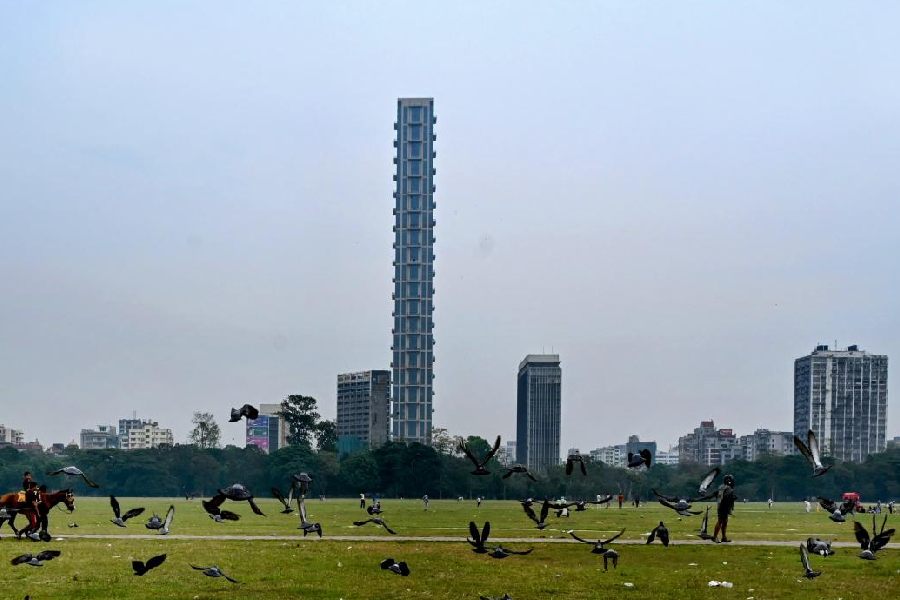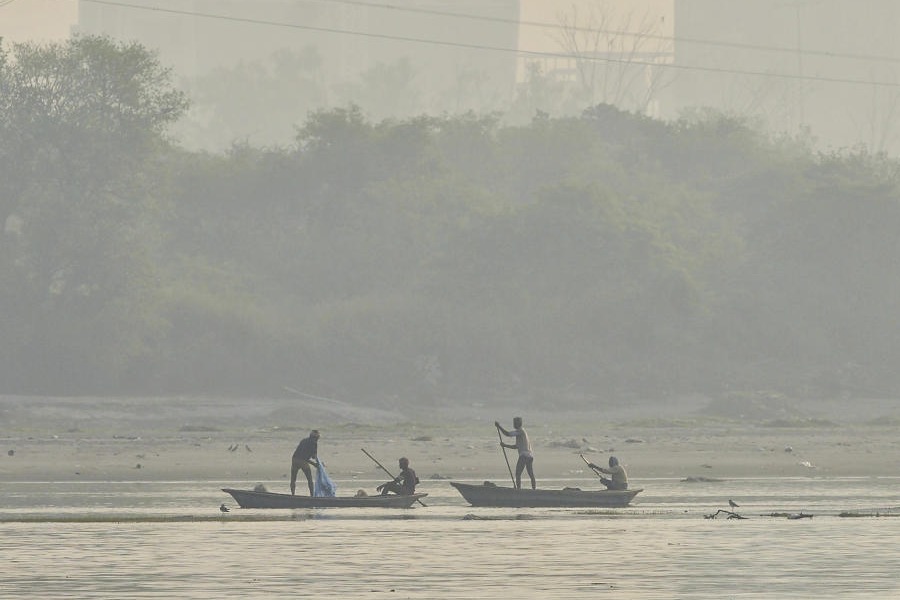 |
| Nand Lal Kumar at KGVK’s Taiwanese papaya farm in Rukka, Ranchi, earlier this week. Picture by Prashant Mitra |
She wears red and has a scent to die for. She makes fans drool and rivals go green. And now, she is minting money for Jharkhand. Meet the Taiwanese papaya, the state’s new passion fruit that is promising to turn around farmland fortunes.
Buoyed by successful experiments and commercial viability in western and southern states of the country, 50-odd farmers in Angara, Ormanjhi, Gola and Silli in Ranchi and also in Seraikela-Kharsawan are cultivating this superior breed of papaya, which was first harvested by Krishi Gram Vikas Kendra (KGVK).
The Ranchi-based voluntary organisation grew the Taiwanese variety on its 3.5-acre farm in Rukka, which has now become a case study for peasants and agricultural researchers across the state. If experts in the field of farming technology are to be believed, the success story that has started from Rukka will revolutionise papaya cultivation in Jharkhand.
Agricultural scientist at KGVK Nand Lal Kumar said after visiting their farm, progressive farmers from in and around Ranchi had started embracing the new variety of papaya. “The Taiwanese plant is a dwarf, almost half the size of a normal papaya tree, which can grow to be 15ft tall. So, there are less chances of crop damage because one does not need to pluck the fruits using a stick or a ladder,” he explained.
Kumar said as many as 1,235 plants could be grown on an acre. “Each yields a minimum of 50-60kg fruits. Harvest expenses are around Rs 70,000. Each fruit can be sold at a minimum of Rs 6-7 in the wholesale market. After all the permutation and combination, a farmer can earn a profit of at least Rs 1 lakh per season,” he said.
The KGVK expert said unlike normal papaya, the Taiwanese papaya was 100 per cent fertile, which means fruits grow on every plant. “If one sows 100 local papaya plants, there is no guarantee that all will bear fruits because some are female and some are male. In case of the Taiwanese, the plants are either female or hermaphroditic (having both genders), which ensures full crop,” he added.
Fruits from female trees are oval, while those from hermaphroditic trees are elongated. Each fruit weighs around 1.2kg, has sweet scent, a shiny orange-yellow rind and thick red flesh that is tender and juicy.
Subodh Ram, a farmer in Ormanjhi, said the Taiwanese papaya had become the most sought-after fruit because of its delicious taste, nutrient content and economic price. Ripe papaya fruits are rich in vitamins A, C and E, besides calcium and potassium. They also contain enzymes that help in digestion.
“People have become health conscious these days and that is a boon for farmers like me,” Ram grinned. He added that he had started cultivating on two acres and expected to reap the benefits in six to eight months.
On the growing demand, Angara farmer Kishan said: “Ranchi alone stomachs 3-4 tonnes of papaya every day, which is like huge. Sadly, most of it is imported from south India, Gujarat and Raipur. But, maybe, no longer. We have started cultivating the Taiwanese papaya in a big way. All we need to do is take extra care of the plants in terms of ensuring adequate water supply. But what the plants return is no less than solid gold.”











